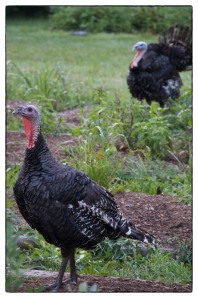You can make meatloaf out of anything, from lentils to venison to duck. You can get fancy and have the three meat combo made from equal parts beef, veal and pork or even a seafood loaf made from salmon. The possibilities are endless.
From what you choose to make your meatloaf isn’t as important as how you make your meatloaf. The steps you use will ultimately influence the outcome of the final product.
Meatloaf, in technical cooking terms, is a forcemeat. A forcemeat comes in a few variations, from sausage to paté but is really nothing more then ground meat. Sometimes it is emulsified until it is smooth such as in hotdogs and other times it is left coarse as in Italian sausage. A binder is needed, bread crumbs, oats, rice might be typical and even eggs are sometimes used.
As you can see when making forcemeat you have options. The one option I don’t stray from though is the ratio of fat to meat. Without the right ratio for fat to meat you will more then likely end up with a dry meatloaf. While it probably would still be edible it would be less then desirable. So here is the ratio, 3 parts meat to 1 part fat.
Arguably this is tough to figure sometimes but generally grocery stores are good about marking such things as their ground beef with percentages of fat. After ground beef though it is up to you to figure out. I just apply a general rule of the thumb, the leaner the meat the closer to the ratio I stay. Venison for example is very, very lean. If I am making meatloaf from it I use 1 1/2 lbs venison to a 1/2 lb of pork belly. On the other hand if I want a pork loaf I just by pork butt and grind it, it always seems to be somewhere in the neighborhood of the ratio.
The other thing about meatloaf is it is designed to use less meat but feed more people or as we say it was meant to stretch out the protein and number of mouths it can feed. To do this a filler is added. Bread crumbs and oats are the first two that come to mind. I used to use only breadcrumbs but over time I switched to oats and have pretty much stuck with oats ever since. What the filler does is as important as how much fat you add. It absorbs the fat and juices as the meatloaf cooks, hence retaining moisture.
When it comes to seasoning I find 1 teaspoon of salt per pound of meat works pretty well. After salt you can spice your meatloaf however you want but I would be careful not to over spice it. You need to find a balance.
Turkey Meatloaf with Peas and Gravy (Serves 6 to 8)
Turkey can be tricky in that it can become very dry. I have found if I use equal parts ground thigh to breast meat it stays moist and succulent, of coarse the 1/2 and 1/2 soaked oats doesn’t hurt one bit either. This is currently my favorite go-to-quick-to-prep meatloaf. Here is why, more often then not I gently sauté any vegetables that will go into the loaf. I do so for several reasons but the main reason is because I don’t like half cooked veggies in my meatloaf. Sweating them before adding them to the meat keeps this from happening. The two main vegetables I add to meatloaf are generally onions and garlic. For this recipe I grated the onion and used garlic powder and it worked beautifully without any extra sautéing.
Note: of course you can add peas to the gravy along with the shoots or omit the shoots altogether and just add the peas.
1 pound ground turkey breast
1 pound ground turkey thigh
1/2 cup oatmeal, coarsely ground
1/2 cup half & half
2 teaspoons kosher salt
fresh ground black pepper
2 teaspoons sage
1/4 teaspoon marjoram
1 teaspoon thyme
1/2 teaspoon garlic powder
2 tablespoon grated onion, grated on the small whole of a grater
1/4 teaspoon nutmeg, freshly ground
1 quart homemade chicken or turkey stock or no salt store bought broth
2 tablespoons rice or wheat flour
2 tablespoons unsalted butter
kosher salt and fresh ground pepper
ketchup (for the crust)
Pea shoots
1. Heat the oven to 325˚ F.
2. In a 2 quart sauce pan melt the butter over medium heat. Add the flour and stir it constantly with a wooden spoon until it smells nutty and becomes tan in color. While stirring, and stirring is very important here to keep from getting lumps, add the chicken stock. Bring the stock to a boil, reduce the heat and let the gravy simmer till reduced by half. Taste the gravy and adjust the seasoning with salt and pepper.
3. While the gravy is reducing combine the cream and oats. Add the seasonings and stir. Now add the turkey and using your clean hands spend a minute or two mixing the forcemeat until everything is well combined. It will be sticky.
4. Making sure you pat out any air bubbles pack the turkey forcemeat into a 4 x 4 x 8 loaf pan. Top evenly with a layer of ketchup and bake the loaf in the oven for 1 hour and 15 minutes or until an instant read thermometer reads 165˚ F when inserted to the middle. Slice and serve with gravy.


